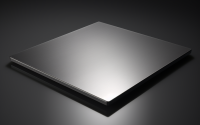Can you imagine that gold can be mined in molybdenum?
![]()
Modern electronic products often contain dozens of metals that are squeezed in as small a space as possible and are almost impossible to disassemble at the end of their life cycle. Believe it or not, precious metals can be “mined” from such e-waste using highly reactive supercritical water. For example, a nickel alloy containing molybdenum is used to produce gold.
It is estimated that nearly 7 billion smartphones will be put into operation by 2022. This number does not include unused and unconnected devices, so the actual number will be larger. These huge amounts of future e-waste contain a small amount of valuable metals that are part of a giant “mine deposit” that is distributed around the world. Gold, palladium, silver and copper can all be “mined” from waste equipment by recycling.
An innovative recycling process is currently being developed that uses supercritical water (a strong oxidant and highly corrosive reactants) to convert carbonaceous materials into gases and dissolve other substances that are insoluble in ordinary water.
A research team at the University of Orleans in France designed a laboratory-scale supercritical water reactor that can operate at 500 ° C and 250 bar pressure, but requires a material that can withstand harsh environments. They finally chose a nickel-based superalloy containing 3% molybdenum, which has excellent strength, toughness and resistance to stress corrosion cracking. The team’s laboratory scale results are impressive. When electronic boards are immersed in supercritical water for several hours, water breaks down their polymer resin into fragile residues, but keeps the metal components intact, allowing their various materials to be separated for further recovery.
The project currently uses small-capacity experimental vats and the 10-litre vat is scheduled to begin operations in 2020. The next stage of development will be to process the batch of semi-continuous closed loop circuits and recover the gases produced by the reaction to reduce energy consumption and process costs. The business process envisioned by the team is designed to process approximately one million mobile phone components per year.
For more information, please visit http://www.samaterials.com.



